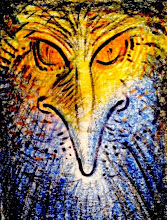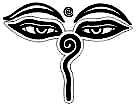
We've studied four concepts of beauty that have shaped the development of modern art, design and architecture.
1. FUNCTIONALISM : (e.g. the architect Le Corbusier) To be beautiful is to be well-designed, to exhibit functionality. Beauty is the look of utility. Ornamentation is merely pleasurable, not truly beautiful. The limit of the concept is that: sometimes functionalism isn’t functional.
2. FORMALISM ( or Non-objectivism) : (e.g. the art critic Clement Greenberg) Something is an artwork if it embodies a specific kind of form, “significant form”, or if it allows the viewer to appreciate it from a purely ‘formal’ attitude of aesthetic appreciation. The limit of the concept is that: formalism seems to deny that art can ever be about something other than itself.
3. UGLY BEAUTY : (e.g. the philosopher G. E. Moore) To be beautiful art is to first appear ugly, because of how the artwork violates conventional notions of taste and habituated modes of aesthetic judgment. The value of ugly beauty is that it signals the overcoming of the interia of perception dimmed down through narcissus narcosis. The limit of the concept is that: it is implausible that we can be said to understand or appreciate a work of art only if we see it as beautiful.
4. NON-AESTHETIC BEAUTY : (e.g. the artist Marcel Duchamp) The uniquely new concept of beauty that emerges through the extreme violence and dislocation of the Great War in Europe is that it is immoral and a lie to create beautiful artworlds in a world made ugly through violence and fragmentation. Thistory of appreciation does not always culminate in the appreciation of beauty. Artistic goodness is not identical with beauty and the perception of artistic goodness is not always the aesthetic perception of beauty. The limit of the concept is that: it fails to explain or justify the importance of beauty for a happy, meaningful life.
We are now moving on to a new concept of beauty inspired by the study of the geometry of natural systems and the attempt to design buildings and human living environments which are alive.
5. BEAUTY AS WHOLENESS : (the architect/complexity scientist Christopher Alexander) Construed ecologically, from the standpoint of the holistic science of natural, evolving systems, the perception of beauty is the perception of wholeness. Wholeness is an objective property of nature and natural systems. This is a very deep objective quality of a place, a work of art, an organism, that affects us deeply. Beauty, as the cognizing of wholeness, can be explained in three, related ways.
To be beautiful is:
(1) To exhibit living structure. (to come to exist through a continuous process of unfolding.)
(2) To be a coherent system (to exhibit a high degree of relatedness.)
(3) To manifest the (transpersonal) Self.
_____________________________
The following points are Christopher Alexander’s summary of his theory of environmental structure as a process of unfolding wholeness. Christopher Alexander is a complexity scientist and architect, and the first thinker in modern times to construct a scientific theory of beauty and its underlying connection to reality. This summary is taken from his recently published paper “Empirical Findings from The Nature of Order” study.
1. A previously unknown phenomenon has been observed in artifacts. It may be called “life” or “wholeness.” This quality has been noticed in certain works of art, artifacts, buildings, public space, rooms, parts of buildings, and in a wide range of other human artifacts.
2. The idea of how much life is in things is objective in the sense of observation, and is thus common to people of different inclinations and different and cultures. This is a surprise, since it seems to contradict the accepted wisdom of cultural relativity.
3. This quality of life seems to be correlated with the repeated appearance of fifteen geometric properties—or geometrical invariants—that appear throughout the object’s configuration.
4. We began to refer to this quality, when viewed in its geometrical aspect, as “living structure.”
5. The appearance of living structure in things—large or small—is also correlated with the fact that these things induce deep feeling, and a feeling of connectedness in those who are in the presence of these things.
6. Degree of life is an objective quality that may be measured by reliable empirical methods. The empirical test that most trenchantly predicts “life” in things, in comparing two things, is a test that asks which of the two induces the greater wholeness in the observer, and/or which of the two most nearly resembles the observer’s inner self.
7. Astonishingly, in spite of the vast variety of human beings, human culture, and human character, there is substantial agreement about these judgments—thus suggesting a massive pool of agreement about the deep nature of a “human self,” and possibly suggesting that we may legitimately speak of “the” human self (at least strongly indicated).
8. The fifteen properties are the ways in which living centers can support other living centers. A center is a field-like centrality that occurs in space.
9. In phenomena ranging in scale from 10-15 to 10-8 meters, on the surface of the Earth again ranging from 10-5 to 105 meters, and then again at cosmological scales ranging from 109 to 1026 meters, the same fifteen properties also occur repeatedly in natural systems.
10. There is substantial empirical evidence that the judged quality of buildings and works of art—judged by knowledgeable people who have the experience to judge their quality objectively—are predicted by the presence and density of the fifteen properties.
11. It is possible that the properties, as they occur in artifacts, may originate with cognition, and work because of cognition, and that is why we respond to them.
12. But that cannot explain why they also occur and recur, and play such a significant role in natural phenomena.
13. Centers appear in both living and non-living structures. But in the living structures, there is a higher density and degree of cooperation between the centers, especially among the larger ones—and this feature comes directly from the presence of the fifteen properties, and the density with which they occur (demonstrated).
14. The structure of living things has been shown to have a predictable geometric coherence at least partly governed by the fifteen properties presented in Book 1 (demonstrated).
15. If we examine the origin of the things in nature and in human art that possess living structure, it turns out that this living structure comes about, almost without exception, as a result of an unfolding process, which draws structure from the whole, by progressive differentiation (demonstrated).
16. More particularly, it is possible to define a new class of transformations, “wholeness-extending transformations,” which allow continuous elaboration of any portion of the world, according to non-disruptive and healing acts. [Note: In Book 2, the term “structure-preserving transformations” is used throughout. Since its publication I have adopted the more expressive term “wholeness-extending.”]
17. This progressive differentiation and coherence building can be shown to depend on the system of wholeness-extending transformations that preserve and extend wholeness (demonstrated).
18. In addition, it can be shown that these transformations generate the 15 properties, as a natural by-product of their wholeness-extending actions (demonstrated).
19. It is also precisely the use of these wholeness-extending transformations which has caused the appearance of the greatly loved, and now treasured, traditional environments all over the world (demonstrated).
20. It can also be shown that the environments typically created by commercial development in the last 100 years are generated by an almost diametrically opposed system of wholeness-disrupting transformations (demonstrated).
21. It may be concluded or inferred that healthy environments can only be generated by actions and processes based on wholeness-extending transformations. If we hope for health or living structure in our built environment, it is therefore reasonable to say that the entire social process of project initiation, design, planning, and construction must be revised to incorporate the necessary processes.
22. Not surprisingly, the new methods and processes required to achieve this healing, will have—as a practical matter—to be substantially different from present-day commercial methods, thus requiring great courage, and a widespread willingness to make serious changes in society (demonstrated).
23. Demonstrations have been given throughout Book 2, showing how a great variety of sequential-holistic processes can give rise to effective unfolding and produce new buildings and environments that have greater than normal coherence, adaptation, and harmony with their surroundings.
24. It is shown, above all, that it is the holistic and sequential nature of the unfolding, which governs the coherent quality of what comes out as the end-product configurations. As far as we are aware, only this kind of process places appropriate emphasis on the well-being of the whole.
25. The core quality of an environment which is unfolded through wholeness-extending transformations will be that it is deeply related to human beings—in a way that may be called “belonging.” (demonstrated)
26. This belonging must be and will be something related to people’s everyday inner feelings. The relatedness to inner feelings will not be trivial but leads, rather, to a far deeper substance than the artificial constructions currently hailed as “art.” (demonstrated)
27. Structures created by a process of unfolding are likely, in addition, to have a wider range of physical and human characteristics—far wider, than the range of those visible in the homogeneous commercial projects of our time. They will, by their nature and by the nature of the wholeness-extending transformations of land and people, nourish the land and people, and give rise to a great depth and substance that provides genuine support for human beings (demonstrated).
28. The additional quality that will arise is that the environment made in this way, will be “sustainable” as a whole, and in a deeper and more comprehensive sense than the kind of technological sustainability that has become fashionable in recent years.






